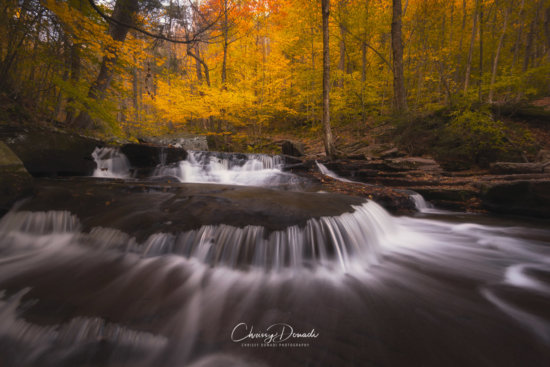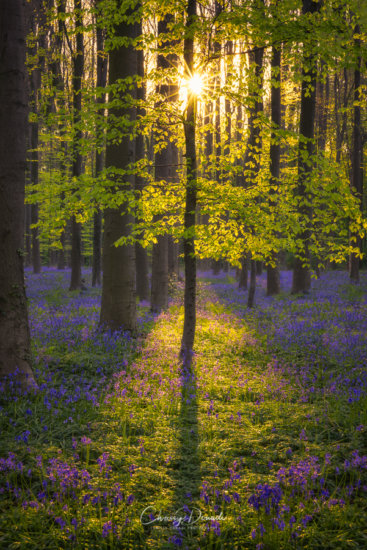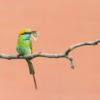Landscape Photography – How to Master the Art of Seeing
The art of seeing is a never-ending journey in my opinion. It is something every landscape photographer should learn, master, and maintain. To that end, this article will only be able to touch on this topic for landscape photography. However, hopefully, it will get you started on the right foot to begin helping you learn to see.
Technically, no one is born with this talent to see. Babies spend months staring at shapes and patterns to develop their ability to focus, and even take a few months until they are able to see colors. Everything babies see is cataloged to memory and helps decode the world around them. In the beginning, the world can overwhelm and easily overstimulate them. As time marches on, infants are able to process more complex images and store memories. All which have emotional ties and additional associations with other senses.

Sparks Lane in Cades Cove by Chrissy Donadi
In landscape photography, we have to reverse our seeing back to those infancy stages, to simplify the story so our audience can understand our intention and universally connect with our image. When attempting “to see” a photography composition, the first piece of advice is to simplify. Mother Nature often clutters locations with all she has to offer. In the field, there is so much to see that finding a photography composition can easily become overwhelming.
Additionally, when searching for a shot, you can use your other senses. You can smell the sweet scent of hyacinth flowers lingering along the forest floor in spring. In autumn, you can feel the cool, crisp air as it sweeps across the leaves. You can hear the crickets serenade the sun to appear over the mountain in the distance or hear the water cascading across rocks from a waterfall. Your senses add to your experience of landscape photography.
Tip #1: Simplify
However, the audience isn’t granted the same opportunity to use all their senses. They only have their sense of sight. The brain has to fill in the rest of the puzzle with your memory bank of experiences, as well as knowledge from television, books, and stories. Images of familiar landscape photography locations, whether you have physically visited the place or not, tend to catch your eye. More than likely, a stellar landscape photo of your home state or country immediately draws your attention. Not only do you recognize the location, but your brain fills what is missing, the emotional ties, those other senses.

This is secret to creating photography composition with universal appeal, the same appeal used in marketing and advertising. Nature is a complex machine filled with a myriad of details. There must be something in the image which quickly catches the audience’s attention. The simpler the image, the easier to find the focal point. From there, the eye will wander through the image. Once you have caught the viewer’s attention by making your focal point stand out, the brain can fill in the other sensory information to make an emotional connection. Now, the audience can relate to your personal image through their own experiences and feel something. With time, you can learn to direct those emotions through the use of light and color as well as other techniques to create better photography compositions.
Tip #2: Define your Focal Point
Alright, so this is much easier said than done by yourself at a landscape photography location. My starting advice is learn to see as an infant would learn to see. Arrive at a location and see what grabs your attention first. Then, simplify everything around that focal point. Try to remove anything unnecessary from the frame (within reason of course). Examine the foreground as well as the background. If either is too busy, try shooting from a different angle or adjust your focal length to remove the distracting element in your photography composition.

This is where it can be helpful to practice the theoretical rules of photography, such as placing your subject according to the rule of thirds or the golden ratio. When learning to see, another trick is to close your eyes and recall the image. Recreating the image in your head allows you to know which parts are critical and memorable. More than likely, you can remove additional details from the photography composition through reframing.
Another trick to test if the landscape photography composition is strong, is to envision the image without color. Without color, the image’s shapes, leading lines, textures, and/or negative space are easier to examine. Can you easily find your focal point? Where and how does your eye wander afterwards? Does the image contain other unnecessarily things which distract the eye? All of these answers help discern if the photography composition is solid or if you should consider trying a different vantage point.
No one is born with the ability to cherry pick eye-catching, story-telling photography compositions. Starting from infancy, every person must develop the ability to focus, see color, and learn their environment. It is the same for landscape photography. Every good photographer honed their talent through study, hours of practice, and thousands of failed attempts. And the great photographers know this is a never-ending journey of continuous improvement. Good luck on your journey and happy shooting!








